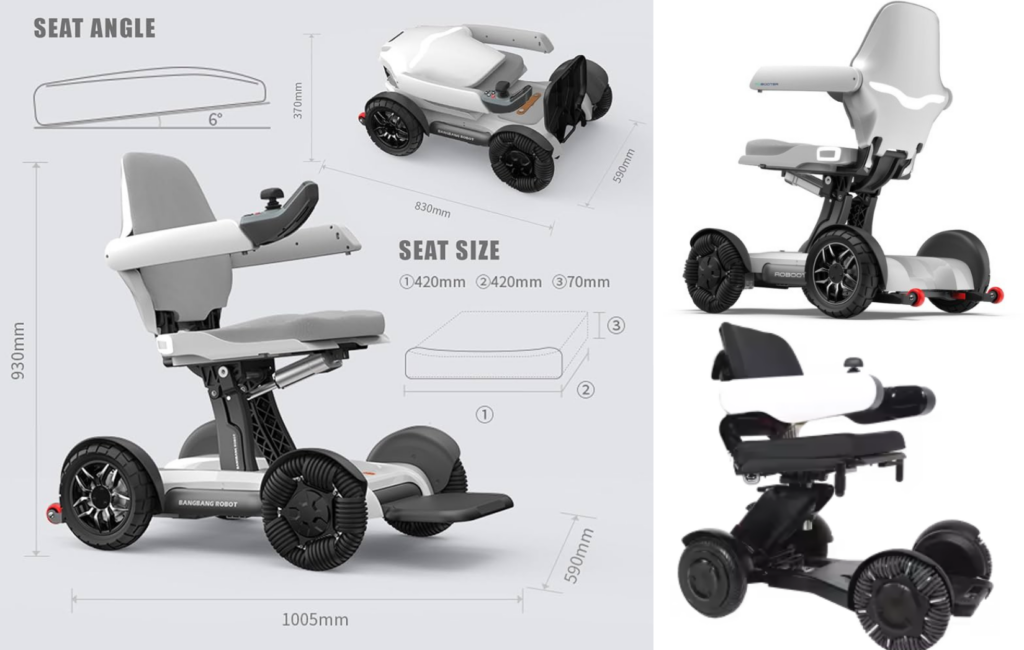
From the simple wooden crutches of centuries past to cutting-edge electric wheelchairs and stylish walking canes, personal mobility aids have undergone a remarkable transformation. What was once purely functional has evolved into a symbol of empowerment and even fashion. In this blog post, we delve into the fascinating history and evolution of personal mobility aids, exploring how these devices have not only served as tools for assistance but also as statements of personal style and expression. Today, modern technology continues to enhance these aids, integrating smart features and customizable designs that cater to individual needs and preferences, further enhancing the quality of life for users. Join us on a journey through time and culture to witness the remarkable shift in perception and usage of personal mobility aids.
The Early Years: Functionality Over Fashion
The concept of personal mobility aids can be traced back to ancient civilizations, where basic assistive devices such as wooden crutches and walking sticks were utilized. These early aids focused solely on functionality, aiming to provide support and enable mobility for individuals with physical challenges. It wasn’t until the late 19th century that patent designs for rudimentary wheelchairs and mobility scooters began to emerge, marking the first step towards a more diverse range of mobility aids.
Technological Advancements and Customization
The 20th century brought significant advancements in the design and functionality of personal mobility aids. Manual wheelchairs evolved to include adjustable features and lightweight materials, offering greater comfort and maneuverability. Furthermore, customization options became more readily available, allowing individuals to tailor their mobility aids to their specific needs and preferences. This shift towards personalization laid the groundwork for the inclusion of aesthetic elements and personal style in mobility aid design.
Cultural Perception and Empowerment
As the 20th century progressed, changing cultural attitudes and advocacy movements helped redefine the perception of personal mobility aids. These devices were no longer viewed solely as medical necessities but were embraced as tools of empowerment and independence. With a growing emphasis on inclusivity and accessibility, individuals began to seek out mobility aids that not only met their functional requirements but also complemented their individuality, leading to an increased focus on aesthetics and fashion in the design of mobility aids.
The Era of Fashion-Forward Personal Mobility Aids
Today, personal mobility aids have transcended their purely functional origins, becoming true fashion accessories. Designers and manufacturers are incorporating elements of style, materials, and color palettes to create visually appealing mobility aids that reflect contemporary trends and individual expression. From sleek, modern wheelchairs to designer-patterned walking canes, the pursuit of both form and function has resulted in a diverse market that celebrates personal style and individuality.
The Future: Innovation and Inclusivity
Looking forward, the evolution of mobility aids continues with a focus on innovation and inclusivity. Technological advancements, such as smart assistive devices and integrated connectivity, are shaping the next generation of personal mobility aids. Furthermore, the push for greater diversity and representation within the industry ensures that mobility aids cater to a wide range of needs while reflecting the diverse personalities and aesthetics of their users. The future promises not only enhanced functionality but also an ever-expanding array of fashionable and stylish personal mobility aids.
Conclusion: A New Dawn in Personal Mobility
The journey of personal mobility aids from purely functional tools to fashion-forward accessories embodies a significant cultural and societal shift. We have witnessed the transformation of these aids into a means of empowerment and self-expression. As we look ahead, the fusion of fashion and functionality in the design of personal mobility aids will continue to enrich the lives of individuals while highlighting the importance of inclusion and individuality. The evolution of personal mobility aids is a testament to the power of innovation, advocacy, and the celebration of diversity.

I totally agree that design should not be just functional, but also about how it makes us feel and look! I love how today’s mobility aids are really catching up on this.
We’re glad you shared your thoughts, Aisha! At Eko Life Malaysia, we believe that the fusion of form and function can lead to a more confident and expressive individual. Our range of ebikes and escooters is designed to not only provide mobility but also to reflect your personal style. If you have any questions or would like to learn more about our products, feel free to reach out to us at [email protected] or +60 3-7890 3042.
What I’ve noticed is that more kids with disabilities are sporting cool-looking wheelchairs and walkers. It’s a great thing to see them embracing their unique personalities through their mobility aids!
That’s a wonderful observation, Rohaya Farid! At Eko Life Malaysia, we also strive to make mobility aids not only functional but also fashionable. We believe that personal style and expression should be accessible to everyone, regardless of abilities. If you have any questions or would like to explore our range of affordable and stylish mobility aids, please don’t hesitate to reach out to us at [email protected] or +60 3-7890 3042. We’d love to hear from you and help you find the perfect mobility aid that suits your needs.
I’m not sure if some people will be comfortable with these fashion-forward mobility aids, especially older individuals who have been used to more functional and utilitarian designs. But hey, I think it’s awesome to see innovation like this!
That’s a valid point, Cindy, and we appreciate your thoughtful consideration. At Eko Life Malaysia, we strive to cater to various needs and preferences. While some individuals may feel more comfortable with traditional designs, we believe that our fashion-forward mobility aids will appeal to a broad audience, including younger generations and those with a keen sense of style. We understand that innovation requires embracing change, and we’re excited to bridge the gap between form and function. If you have any concerns or suggestions, please don’t hesitate to reach out to us at [email protected] or +60 3-7890 3042. We’d love to hear from you!